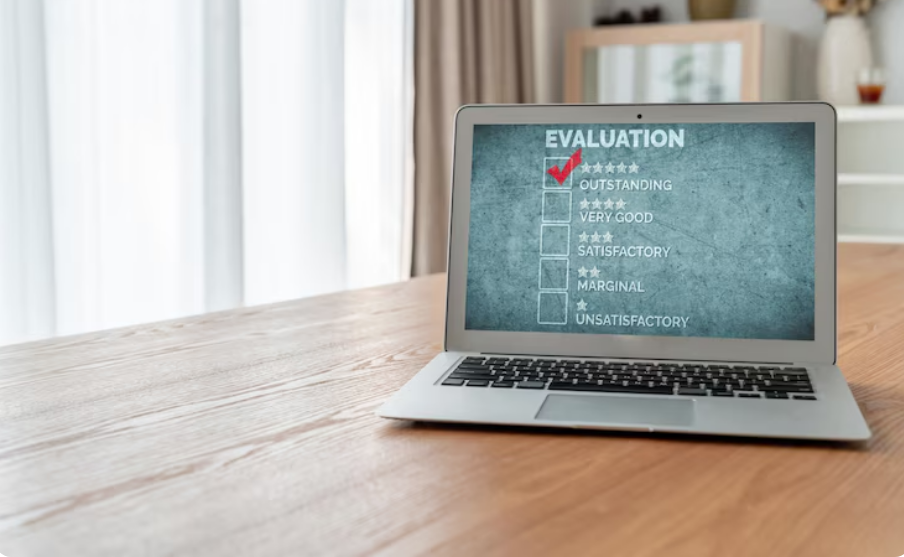Introductie
Het debat over benchmarking versus whitepapers benadrukt een verschuiving in hoe B2B-marketeers leads genereren. Traditionele whitepapers worden al lange tijd gewaardeerd om hun diepgang en autoriteit, maar slagen er vaak niet in om de moderne koper te boeien die op zoek is naar gepersonaliseerde en direct toepasbare content. Benchmarktools bieden dit door interactieve content aan te reiken met realtime, op maat gemaakte inzichten, waardoor leadcaptatie verandert in een dynamische ervaring. Deze betrokkenheid verhoogt de leadkwaliteit en versnelt verkoopcycli. Voor B2B-marketeers die hun leadgeneratie willen optimaliseren, is het cruciaal om te begrijpen waarom benchmarkingtools whitepapers overtreffen. Dit artikel onderzoekt deze transformatie, onderbouwd met data en praktische strategieën, inclusief hoe oplossingen van Compare2Compete meetbare resultaten kunnen opleveren.
De evolutie van B2B-leadgeneratie: van whitepapers naar benchmarktools
Whitepapers zijn jarenlang een fundament geweest in B2B-marketing, vaak aangeboden als downloadbare PDF’s achter een formulier. Hun statische formaat en one-size-fits-all aanpak beperken echter de interactie en relevantie. Uit een onderzoek van Demand Gen Report blijkt dat 88% van de kopers interactieve content verkiest boven statische middelen, wat wijst op veranderende verwachtingen op het gebied van betrokkenheid.
Benchmarktools bieden een duidelijk voordeel doordat ze prospects in staat stellen om hun prestaties realtime te vergelijken met branchegemiddelden. Deze personalisatie verhoogt niet alleen de betrokkenheid, maar filtert ook leads met lage intentie eruit. Zo zag een fintechbedrijf dat een benchmarktool implementeerde een toename van 50% in gekwalificeerde leads en een verkorting van de salescyclus met 20%. De interactieve aard van deze tools moedigt gebruikers aan om actief deel te nemen in plaats van passief informatie te consumeren, wat de effectiviteit van leadgeneratie verhoogt.
De overstap van whitepapers naar benchmarktools betekent het leveren van waarde die zich aanpast aan de behoeften van de koper, met inzichten die directe actie uitlokken. Dit creëert een sterkere basis voor lead nurturing en hogere conversieratio’s.
Benchmarking versus whitepapers: wat maakt het verschil?
Het begrijpen van de fundamentele verschillen tussen benchmarkingtools en whitepapers maakt duidelijk waarom de eerste betere resultaten oplevert op het gebied van leadgeneratie.
Whitepapers zijn doorgaans lange, tekstzware documenten bedoeld om expertise te tonen. Ze bieden brede inzichten, maar staan zelden interactie of personalisatie toe. Prospects moeten zich door een grote hoeveelheid inhoud worstelen om waarde te vinden, wat de kans op afronding én de leadkwaliteit verlaagt.
Benchmarktools daarentegen bieden:
- Gepersonaliseerde rapporten op basis van gebruikersinput
- Realtime datavergelijkingen met concurrenten of branchegemiddelden
- Direct toepasbare aanbevelingen afgestemd op zakelijke behoeften
Een enterprise softwarebedrijf zag een stijging van 65% in leadbetrokkenheid nadat het een traditionele whitepaper verving door een interactieve benchmarktool. Dit leidde tot een 40% hogere conversieratio van lead naar kans. Benchmarktools positioneren bedrijven als adviserende partners door prospects te helpen zelf hiaten en kansen te identificeren, wat het vertrouwen in een vroeg stadium van het verkooptraject versterkt.
Deze inzichten tonen aan dat statische whitepapers tekortschieten in een tijdperk waarin B2B-kopers precisie en relevantie eisen.
Waarom interactieve content betere leadbetrokkenheid oplevert
Interactieve content, zoals benchmarktools, boeit leads doordat het hen betrekt bij het ontdekkingsproces. In tegenstelling tot statische rapporten maken interactieve tools van data een persoonlijke ervaring, wat zorgt voor diepere betrokkenheid en betere kwalificatie.
Belangrijke voordelen zijn:
- Meer tijd op de pagina: Gebruikers brengen aanzienlijk meer tijd door met dashboards en gepersonaliseerde rapporten.
- Betere leadkwalificatie: Reacties in de tool segmenteren leads automatisch op basis van pijnpunten en volwassenheid.
- Groter deelbaarheids-potentieel: Gepersonaliseerde inzichten worden eerder gedeeld binnen het netwerk van de koper, wat het bereik vergroot.
Een SaaS-bedrijf integreerde een benchmarkcalculator op zijn website en zag een stijging van 75% in formulierinzendingen. De gegenereerde leads waren meer verkoopklaar, aangezien de vragen in de tool ongekwalificeerde prospects uitsloten. Hierdoor konden salesteams zich richten op waardevolle gesprekken, wat de slagingskans verhoogde.
Het combineren van benchmarktools met gated content zorgt voor gelaagde contentlevering—leads worden vastgelegd via de tool, en vervolgens gevoed met diepgaande materialen—wat de conversiekansen maximaliseert.
Benchmarktools inzetten in je B2B-marketingstrategie
Het maximaliseren van de impact van benchmarktools vereist een strategische integratie en uitvoering:
- CRM-integratie: Automatiseer het vastleggen en scoren van leads door benchmarkdata direct te synchroniseren met je CRM. Dit stroomlijnt de opvolging en verbetert de overdracht naar sales.
- Doelgroepsegmentatie: Gebruik gebruikersinput om leads te segmenteren op pijnpunten, bedrijfsomvang of branche, en zet gerichte dripcampagnes op.
- Kanaaloverschrijdende promotie: Vergroot het bereik door je benchmarktools te promoten via e-mail, sociale media, betaalde advertenties en tijdens evenementen.
Een technologiebedrijf in de maakindustrie combineerde zijn benchmarktool met gerichte LinkedIn-campagnes. Het resultaat was een stijging van 30% in MQL’s (Marketing Qualified Leads) en een daling van 25% in kosten per lead binnen vier maanden.
Door deze tactieken te implementeren, zorgen benchmarktools niet alleen voor leadgeneratie, maar leveren ze ook waardevolle data die vervolgactiviteiten in marketing en sales versterken.
Compare2Compete: De benchmarkingtool die B2B-marketeers nodig hebben
Compare2Compete pakt veelvoorkomende uitdagingen in leadgeneratie aan door te voorzien in:
- Branchespecifieke benchmarks: Afgestemde data die relevantie en betrokkenheid binnen nichepublieken verhoogt.
- Interactieve dashboards: Gebruiksvriendelijke interfaces waarmee prospects prestaties kunnen vergelijken en hiaten onmiddellijk kunnen herkennen.
- CRM-compatibiliteit: Naadloze data-integratie voor efficiënte leadopvolging en nurturing.
Een B2B-dienstverlener die Compare2Compete gebruikte, verkortte de tijd voor leadkwalificatie met 35%, waardoor sales sneller in contact kwam met hoogwaardige leads. De datagestuurde inzichten van de tool stelden marketeers in staat om gerichte campagnes te maken die de pijplijnsnelheid met 22% verhoogden.
Door ruwe data om te zetten in bruikbare intelligentie geeft Compare2Compete marketing- en salesteams de tools die ze nodig hebben om concurrenten te overtreffen en de omzetgroei te versnellen.
Conclusie
De vergelijking tussen benchmarking en whitepapers markeert een duidelijke evolutie in B2B-marketing: kopers eisen tegenwoordig interactieve, gepersonaliseerde inzichten in plaats van statische rapporten. Benchmarktools voldoen aan deze behoefte door de betrokkenheid te vergroten, de leadkwaliteit te verbeteren en de verkoopcycli te versnellen.
Marketeers die benchmarkingtools zoals Compare2Compete integreren in hun leadgenstrategieën verkrijgen een concurrentievoordeel via datagestuurde, adviserende verkoopaanpak. Om voorop te blijven lopen, is het essentieel om de overstap te maken van traditionele whitepapers naar dynamische benchmarkingoplossingen die inzichten omzetten in actie.
Begin vandaag nog met het inzetten van benchmarkingtools om leads met hoge intentie te genereren en sterkere salespijplijnen op te bouwen. Als je je aanpak voor leadgeneratie wilt transformeren, is het verkennen van het Compare2Compete-platform een essentiële eerste stap.



